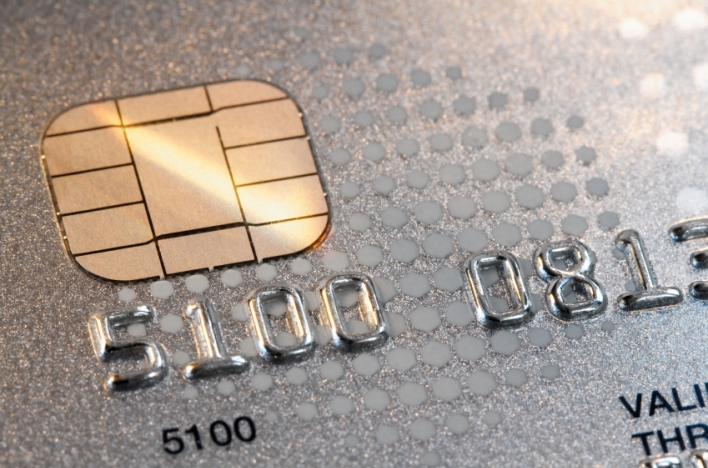The credit card industry is making a big push for banks and merchants to adopt a new type of card technology that should help reduce cases of fraud.
Starting next October, businesses that don’t accept these cards for in-person transactions could be on the hook for fraud-related losses.
Many experts would say it’s about time. The United States is one of the last major countries to incorporate “smart card” technology, and we have a growing problem with these crimes. Americans were the victims in 47 percent of the world’s credit card fraud cases in 2012.
What’s EMV?
If you’re like most people, your credit card has a black magnetic stripe down the back. That stripe stores the payment data that’s required to successfully process a transaction whenever you go into a store.
The new cards have a computer chip embedded in them, and that chip holds the card holder’s payment information. This technology is called EMV after the companies that developed it: Europay, MasterCard and Visa. It’s often referred to as chip-and-PIN because many EMVcards also require users to enter a PIN code at the time of purchase instead of a signature.
Using a card skimmer, it’s relatively easy to steal the information off a card with a magnetic stripe. While the data on magnetic-stripe cards doesn’t change, EMV cards generate a unique code for each transaction, and that increases the technical challenge
for thieves.
According to the Smart Card Alliance, an industry group that’s encouraging EMV use, it is “virtually impossible to create a counterfeit EMV card.” The United Kingdom and Canada both saw huge declines in fraud cases after widespread rollout of EMV.
There is one possible problem, though. Thieves may turn their attention to online fraud instead. Europe saw its numbers of online fraud increase by 21 percent in 2012—due in part to EMV scaring the bad guys away from brick-and-mortar shops, security firm ThreatMetrix reported.
The Liability Shift
The nation’s leading credit-card companies—American Express, Discover, MasterCard and Visa—have announced that, beginning in October 2015, merchants could be held liable for any losses in cases of in-store fraud if they haven’t started accepting EMV credit cards. (Gas stations get a two-year delay because their upgrade costs will be higher.)
However, if merchants do accept EMV in their shops, the customer’s bank or the credit card company would be on the hook for any losses.
Accepting EMV cards requires a different kind of point-of-sale terminal. In fact, customers won’t swipe their cards anymore. They’ll “dip” them into a reader and leave them there until the transaction is approved.
Many of these terminals cost a few hundred dollars, though Square has introduced a lightweight reader for about $30. If you’re a small merchant, be on the lookout for incentives or other programs to help your company upgrade. American Express recently announced that it will put up $10 million to help small businesses pay for EMV-compliant terminals.
What if a small business can’t afford to upgrade its terminals right away? Will it be forced to turn away customers who already carry EMV cards? No, because the credit card companies are including magnetic stripes on those cards for the time being, so that card holders won’t be inconvenienced.


